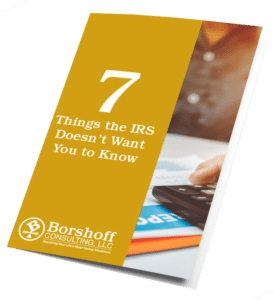The Tax Credit for the Elderly or Disabled was designed to help the nation’s seniors and disabled taxpayers by reducing their tax bill by an amount up to $7,500. The great thing about this is that it falls under the category of tax credits rather than tax deductions. This means that it doesn’t just reduce your taxable income; it may take up to $7,500 off your tax bill.
The filing of your taxes when you take the Tax Credit for the Elderly or Disabled can be complicated since you are required to fill out three forms. Schedule R will help you determine the amount of the tax credit. Schedule 3 will be where you report the amount of the tax credit from Schedule R, and all of this will be reported on your annual tax return, IRS Form 1040, or IRS Form 1040-SR.
Because this makes things complicated, it is a good idea to hire a qualified tax professional to do your taxes. They will be able to determine if you are, indeed, eligible for the tax credit and can navigate the forms easily for you.
What is the Tax Credit for the Elderly or Disabled?
The Tax Credit for the Elderly or Disabled was created for taxpayers over the age of 64 or who are retired due to a permanent and total disability. It may help you reduce your tax liability up to $7,500, depending on your adjusted gross income. If qualified, the least amount of this credit available is still $3,750, which could be a lot for you if you have a large tax liability.
Who is allowed to claim the tax credit?
The Age Requirement
The Tax Credit for the Elderly or Disabled is for U.S. citizens or resident aliens who are 65 years old or older or those who have retired due to complete and total disability. Provided you have turned 65 before the last day of the tax year, you will qualify the tax credit. What matters is your age as of December 31 of the tax year.
The Disability Requirement
While the credit was created to help seniors, it may also help those who are disabled by reducing the federal income taxes owed in relation to disability income. Provided you are on permanent and total disability when you retire and are under the age of 65 on the last day of the tax year and receive taxable disability income, you will qualify for the tax credit.
Who is considered to be disabled?
You must be permanently and totally disabled to where you can no longer perform any kind of gainful activity. This disability must be determined medically, but you can be disabled with either a physical illness or a mental one. The disability must be a long-term illness, lasting at least 12 months, or you must have a disability that will result in your death.
What disability documentation is needed to claim the credit?
To receive the Tax Credit for the Elderly and Disabled, you must be retired due to your disability. However, to be on permanent and total disability, you will need proof of such illness from a qualified physician. He or she must give you a signed statement that certifies that you are not able to engage in any “gainful activity” because of your disability.
Most likely, if you have a long-term illness, leading to permanent disability, you will be retired anyway. You may have made the decision that you cannot work because of a long-term or fatal disability, or your disability can be the result of being forced to stop working because of your physical or mental illness. Whatever the reason, you must be fully disabled, as determined by a physician.
Do I have to receive disability income?
To receive this tax credit, you must also have disability income, which would be paid under your employer’s accident, health plan, or pension plan. Basically, the disability income must be included as part of your income as wages or payments in the place of wages during the time when you are absent from your job because of this disability. Usually, this would be the same time that you are retired.
It’s important to take note of something, though; disability income from retirement does not count for you to claim this tax credit; also, any amounts you received after reaching the retirement age, as set by your former employer, payments you would have received if you had retired, does not count as disability income.
Basically, any payment you receive that is not disability income does not apply to this tax credit.
In summary, you must be at least 65 years old (unless you are permanently and totally disabled) or meet three disability requirements. You are retired due to a disability; you have taxable disability income for the tax year; you have not reached the mandatory retirement age set forth by your former employer.
How much is this tax credit worth?
The Senior Tax Credit for the Elderly or Disabled is worth between $3,750 and $7,500, and that amount comes directly off your tax bill because it’s a tax credit, not a tax deduction. Tax deductions reduce taxable income, which can help a lot. However, a tax credit takes dollars off your tax liability. For this reason, tax credits are usually much more beneficial.
How does the tax credit work when filing your taxes?
The Tax Credit for the Elderly and Disabled is 15% of the initial amount, less the total of all nontaxable Social Security payments, certain nontaxable pensions, disability benefits, or annuities. To calculate the credit, you must also add in one-half of your adjusted gross income (AGI) less the income limitation amount.
The “initial amount” is the lesser of your taxable disability income or the set income limitations, as set by the IRS during the tax year.
As explained by FOX News, your adjusted gross income (AGI) or the combination of nontaxable disability income, pension annuity income, and Social Security income must fall below the threshold limits listed in the IRS Publication 524: Credit for the Elderly or the Disabled. The limits on your AGI range from $12,500 to $25,000. These amounts typically are adjusted each year.
To claim the Tax Credit for the Elderly and Disabled, you must fill out two additional tax forms and use them when you complete your annual tax return. Schedule R: Credit for the Elderly or the Disabled shows you the calculations you need in order to determine the amount of your tax credit.
To fill out Schedule R, you will need to know your filing status, age, and disability status, or you will need to know this information for the person you are filing for. Schedule R will determine the starting amount of the credit. You will receive a credit of $3,750, $5,000, or $7,500.
Part I of the form is for information purposes. Part II is for those on permanent disability. Part III helps you determine which adjustments you need to take to your tax credit based on your filing status and income.
You will enter this total tax credit amount on line 54 of Schedule 3: Additional Credits and Payments. You will need to attach Schedule 3 to your annual tax return, IRS Form 1040, or IRS Form 1040-SR. You will also want to attach Schedule R to your tax return.
What else should I know about this tax credit?
The Tax Credit for the Elderly and Disabled is a non-refundable credit. This means you cannot receive a credit that’s larger than your tax liability, even if you qualify for one. In other words, this credit won’t result in you receiving a tax refund because it is not refundable.
Remember that you will be preparing 3 forms – Schedule R, Schedule 3, and your annual tax return, which is most likely IRS Form 1040 or IRS Form 1040-SR. Because this makes things a bit complicated, it would be a good idea to hire someone to do your taxes this year.
A proper tax consultant will know which tax credits you are eligible for and can help you navigate the forms with ease. Be sure to use a qualified tax professional if you decide to have someone do your taxes for you.
If you think you will qualify for the Tax Credit for the Elderly and Disabled, check out IRS Publication 524 for the full details to claim the credit.
Conclusion
Are you looking to claim the Tax Credit for the Elderly and Disabled? Are you concerned with filing your annual tax return? This credit can be complicated since you must use 3 tax forms, so be sure to reach out to a qualified tax consultant, someone who can help you get the best tax benefits during tax season.
If you need assistance in filling out your tax return or need representation for an audit, we can help! We do business consulting, tax audit representation, tax consulting, and more. Reach out today for a free tax consultation. You can trust Indiana’s tax expert!





